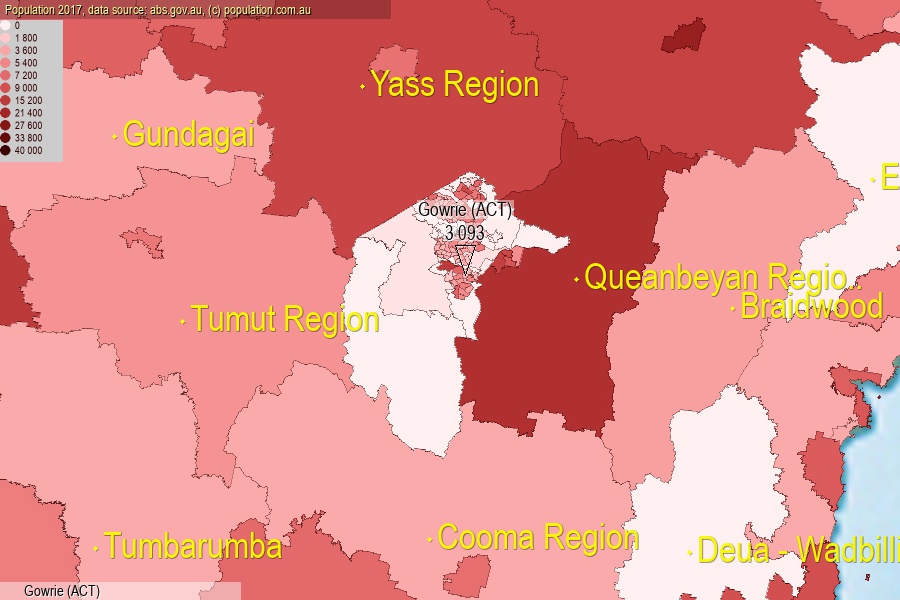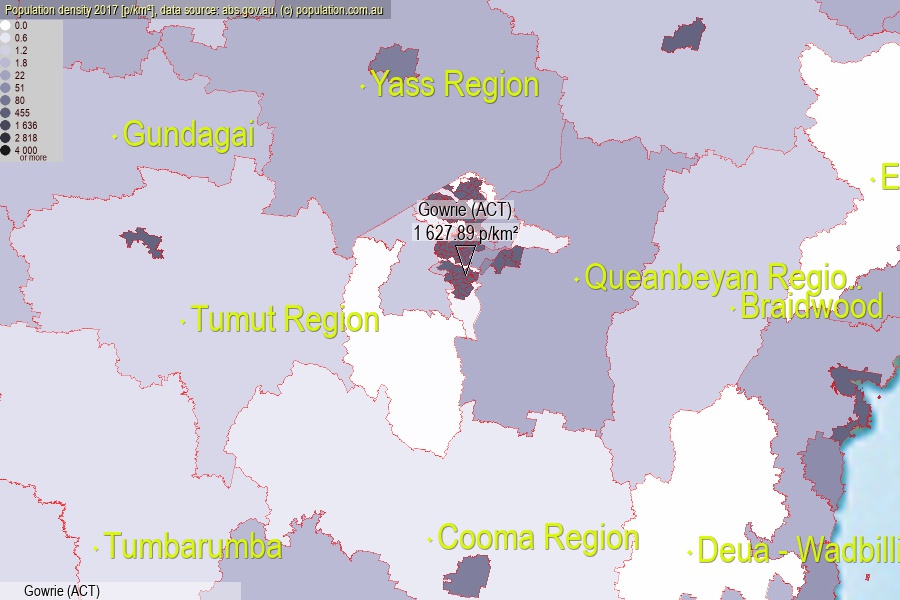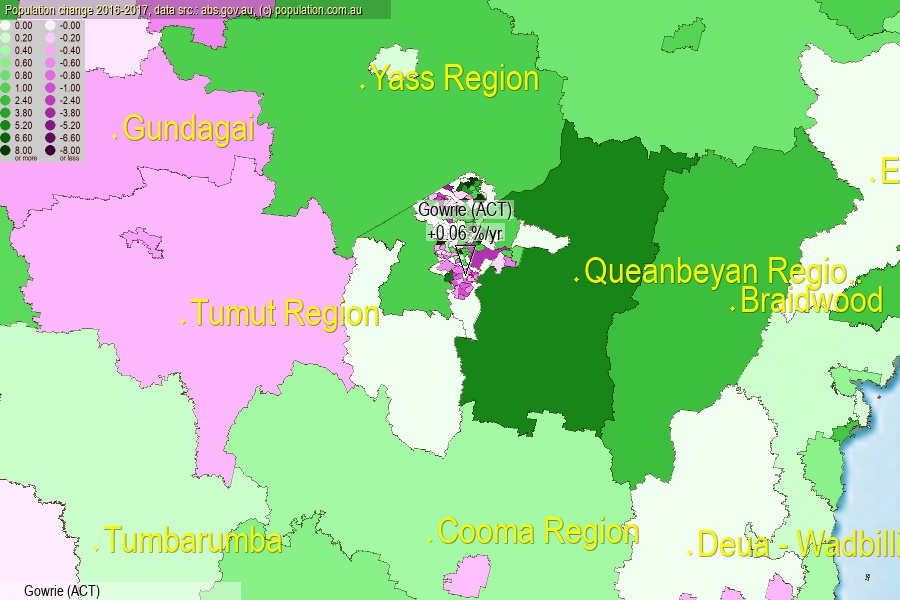 population.com.au
population.com.auLast official estimated population of Gowrie (ACT) (as Statistical Area Level 2) was 3 093 people (on 2017-06-30)[2]. This was 0.01% of total Australian population and 0.738% of ACT population. Area of Gowrie (ACT) is 1.90 km², in this year population density was 1 627.89 p/km² . If population growth rate would be same as in period 2016-2017 (+0.06%/yr), Gowrie (ACT) population in 2025 would be 3 109. [0]



Click to enlarge. Gowrie (ACT) is located in the center of the images.
Population [people], population density [p./km²] and population change [%/year] [2]
View borders » (new window) [4]
[1991-1992] -0.46 %/Yr.
[1992-1993] -0.21 %/Yr.
[1993-1994] -2.16 %/Yr.
[1994-1995] -2.08 %/Yr.
[1995-1996] -1.53 %/Yr.
[1996-1997] -1.26 %/Yr.
[1997-1998] -0.75 %/Yr.
[1998-1999] -0.95 %/Yr.
[1999-2000] -1.15 %/Yr.
[2000-2001] -0.37 %/Yr.
[2001-2002] -0.69 %/Yr.
[2002-2003] -0.75 %/Yr.
[2003-2004] -1.54 %/Yr.
[2004-2005] -1.32 %/Yr.
[2005-2006] -0.60 %/Yr.
[2006-2007] -0.57 %/Yr.
[2007-2008] -0.72 %/Yr.
[2008-2009] -0.88 %/Yr.
[2009-2010] -0.80 %/Yr.
[2010-2011] -2.60 %/Yr.
[2011-2012] -0.38 %/Yr.
[2012-2013] -0.89 %/Yr.
[2013-2014] -0.77 %/Yr.
[2014-2015] -0.06 %/Yr.
[2015-2016] +0.23 %/Yr.
[2016-2017] +0.06 %/Yr.
[0] Calculated with linear interpolation from officially estimated population
[1] Read more about SA2 and Australian Statistical Geography Standard (ASGS) on abs.gov.au
[2] Population data from Australian Bureau of Statistics (Population and density: 2017; change: 2016-2017)
[3] Digital Boundaries: Australian Statistical Geography Standard (ASGS) 2016.
[4] Border coordinates are simplifyed using Ramer-Douglas-Peucker algorithm.